How to Make Cajeta (Easy Mexican Dulce de Leche)
Learn how to make the authentic Mexican cajeta recipe (dulce de leche or milk caramel sauce). This easy slow-cooked recipe is worth every minute.
You’ll love drizzling it over all your favorite desserts!
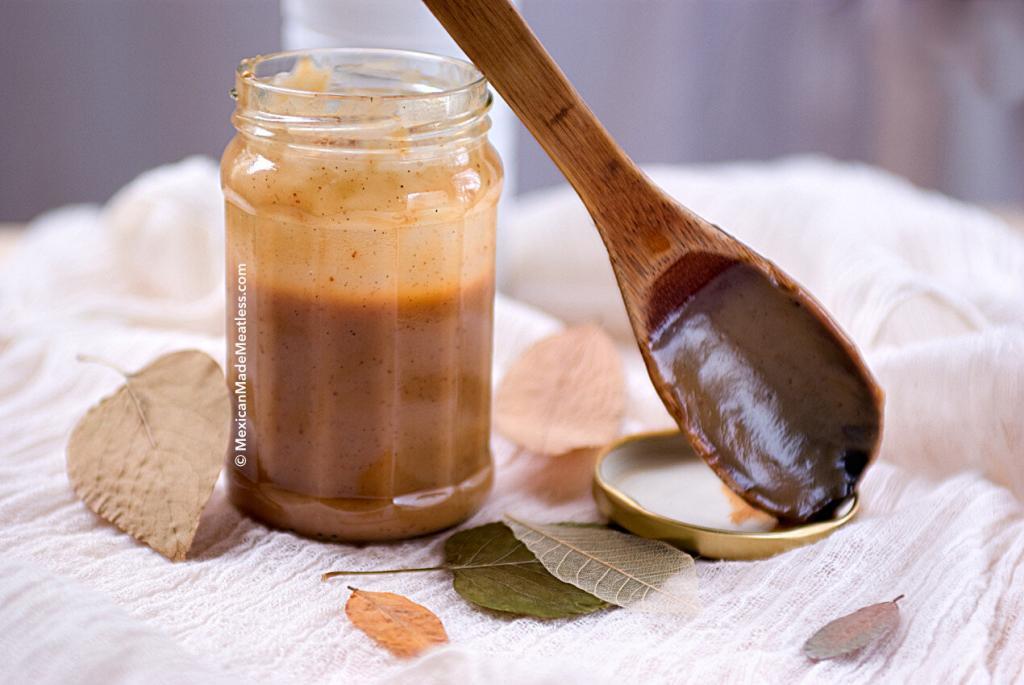
What is Cajeta
Cajeta is going to become one of your favorite sweet things in the world!
So what is Cajeta? It’s a sweet thick milk caramel sauce or syrup. In Mexico goat milk is typical used.
The milk is combined with sugar, vanilla, cinnamon, salt and a little baking soda.
In Mexico, this sweet confection is known as cajeta and in other Spanish speaking countries, it is called dulce de leche.
Dulce de Leche
Dulce de leche means “milk candy”. But it’s not an actual candy, it’s more like a milk caramel sauce.
The term “dulce de leche” is made with regular cow’s milk. It’s also more commonly called this in central and Southern Latin American countries.
I grew up calling it cajeta so that’s the name I prefer, but I do realize that in some other Spanish speaking Latin American countries the word cajeta is considered to be a not so nice word.
Who Invented It
The word cajeta can also mean little wood boxes, and traditionally the cajeta was packaged and stored in wood boxes.
So as you can see it has many different meanings and uses depending on the region or dialect of Spanish. There are several areas in Mexico that claim they invented or that cajeta originated there.
But since the indigenous people did not really consume dairy products, most likely the sweet originated in Spain and brought to Mexico or introduced by the conquistadores.
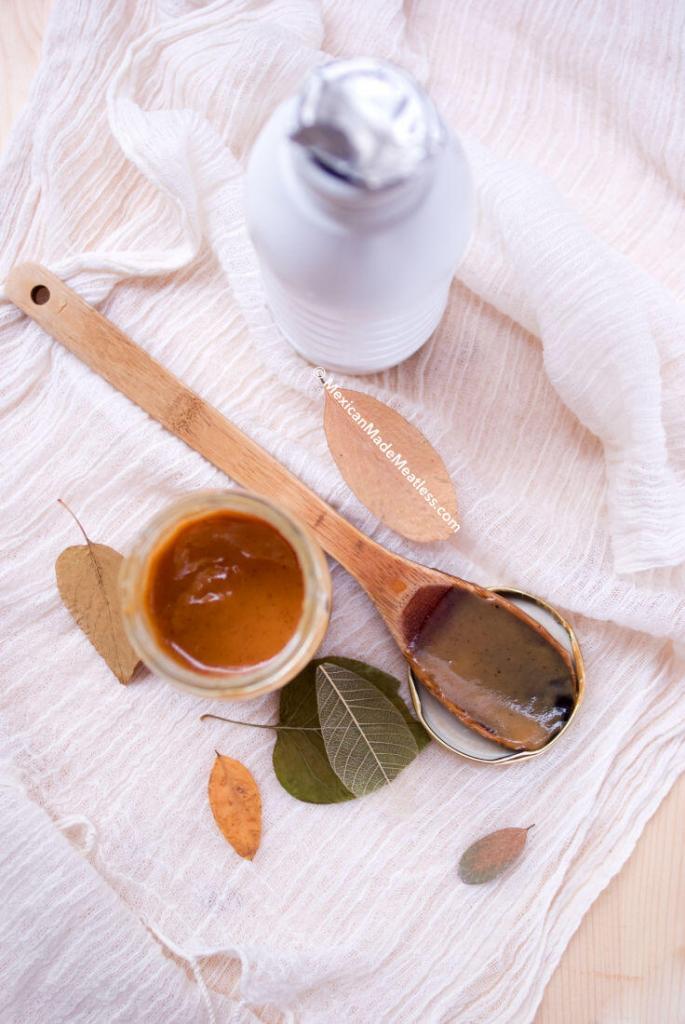
Different Types of Mexican Cajeta
There are several different types of cajetas. Though if you live outside of an area that produces cajeta, you may only find “regular” cajeta. Sometimes this is also just called cajeta quemada.
Envinada
Some cajeta recipes will had an alcohol added to the recipe. They can be called “cajeta envinada” or occasionally “cajeta borracha”.
The alcohol used can be either rum or brandy.
Cajeta Coronado
A popular brand of cajeta quemada and envinada is Cajeta Coronado.
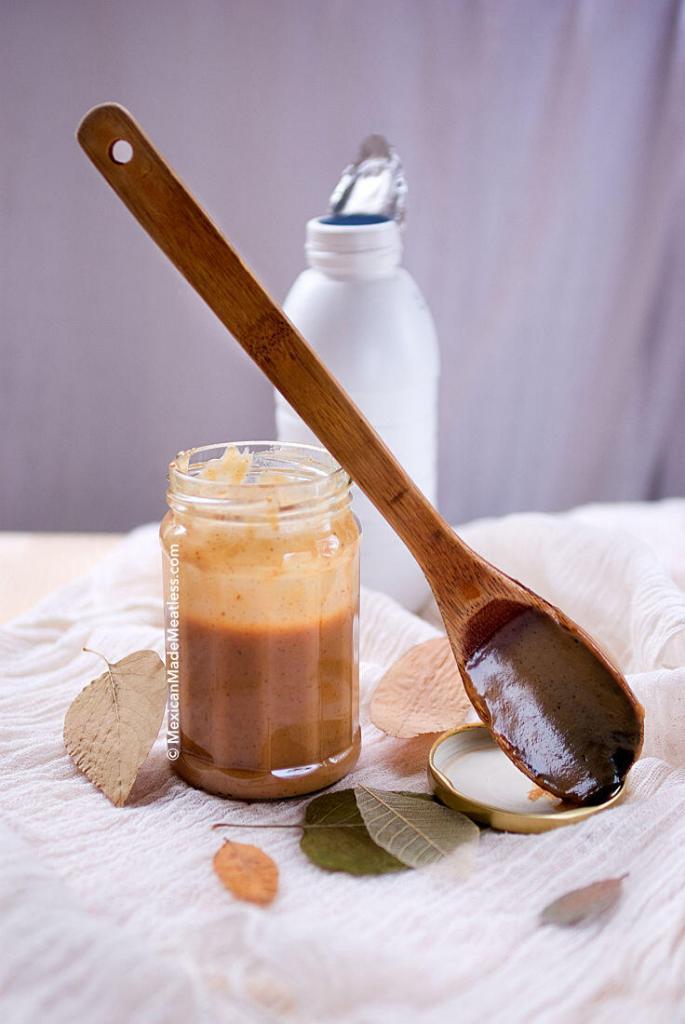
Ways to Use It
My family uses cajeta as a topping on almost anything we want. My personal favorite is to eat it right off the spoon like peanut butter or Nutella.
One of the most popular ways of eating cajeta, in Mexico, is by spreading it on a piece of bolillo. It’s just like you would spread jelly on a piece of toast. Delicious!
Another of my favorite ways of eating it is on “hot cakes” or pancakes. This is like an American-Mexican fusion treat.
In my family, it was a special treat and the kids went crazy for it. We were lucky too because, after we moved to the States, my mother would buy and bring back plastic tubs from her trips to our hometown.
Recipes to Drizzle it Over
- cajeta on crepes (or crepas) is another favorite of mine, though I didn’t discover it until I was older, it’s such a great dessert.
- You can drizzle cajeta over ice cream
- you can make a cajeta milkshake
- use it as cajeta cookie or empanada filling
- use it on cajeta tamales
- add a tablespoon to your coffee
- drizzle over waffles and pancakes
- use it on cajeta frosting for cupcakes
- stir into rice pudding or even oatmeal
- dip your favorite fruits into
There are many different uses for cajeta and it’s pretty much something to use as you’d like.
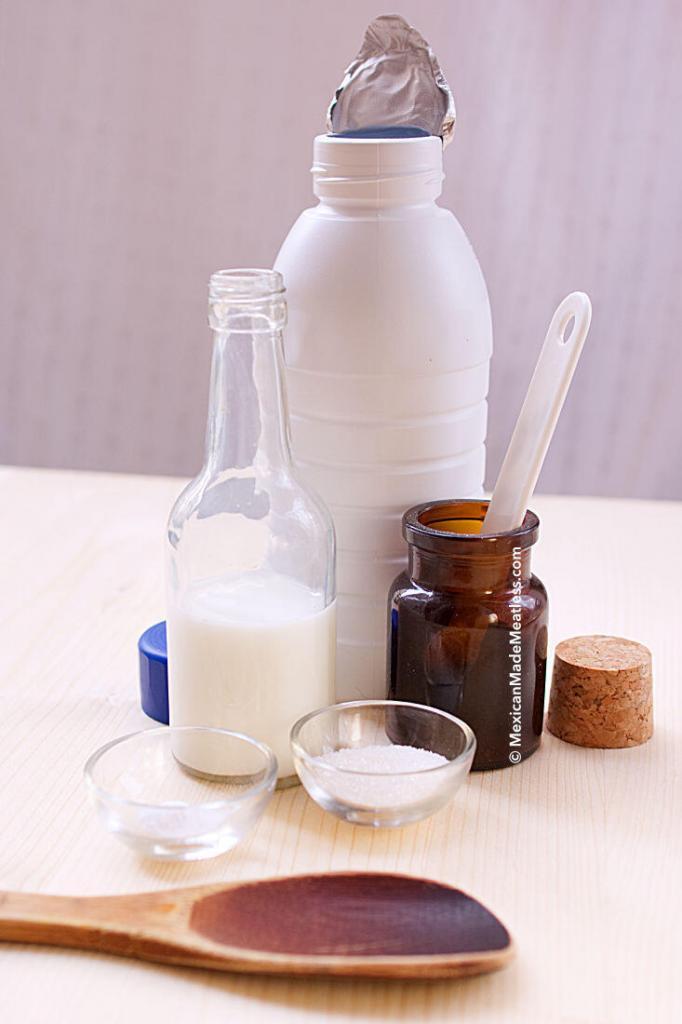
How to Make Cajeta
The authentic traditional Mexican recipe for cajeta uses a mix of goat milk and cow milk. And while you may be put off by the goat milk, don’t be.
Really, don’t be.
It’s very similar to cow milk and actually just has a slightly more savory taste to it than “regular” milk.
You won’t be able to differentiate between the two kinds of milk once the cajeta is prepared!
With Cow Milk
If you skip the goat milk and only use cow milk then it becomes dulce de leche. The taste is different than the traditional Mexican cajeta recipe.
So if you wanted to make the cow milk cajeta recipe simply swap out all of the goat milk in my recipe for regular milk. The remaining cajeta recipe and ingredients would stay the same.
Cajeta Recipe with Condensed Milk
In this case the cajeta would also become dulce de leche. The reason being that condensed milk is made with cow milk.
There are two methods for cajeta or dulce de leche with condensed milk.
- Submerge a can of condensed milk in a pot of water and simmer for hours. This allows the condensed milk to thicken further and turn that brown cajeta caramel sauce color.
- Pour the canned condensed milk into a pot and simmer to cook down the milk. This in turn caramelizes the sugars and turns the milk a thick caramel consistency with that golden brown color.
You could also use a slow cooker (or crock pot) with the regular cajeta recipe or with the canned condensed milk.
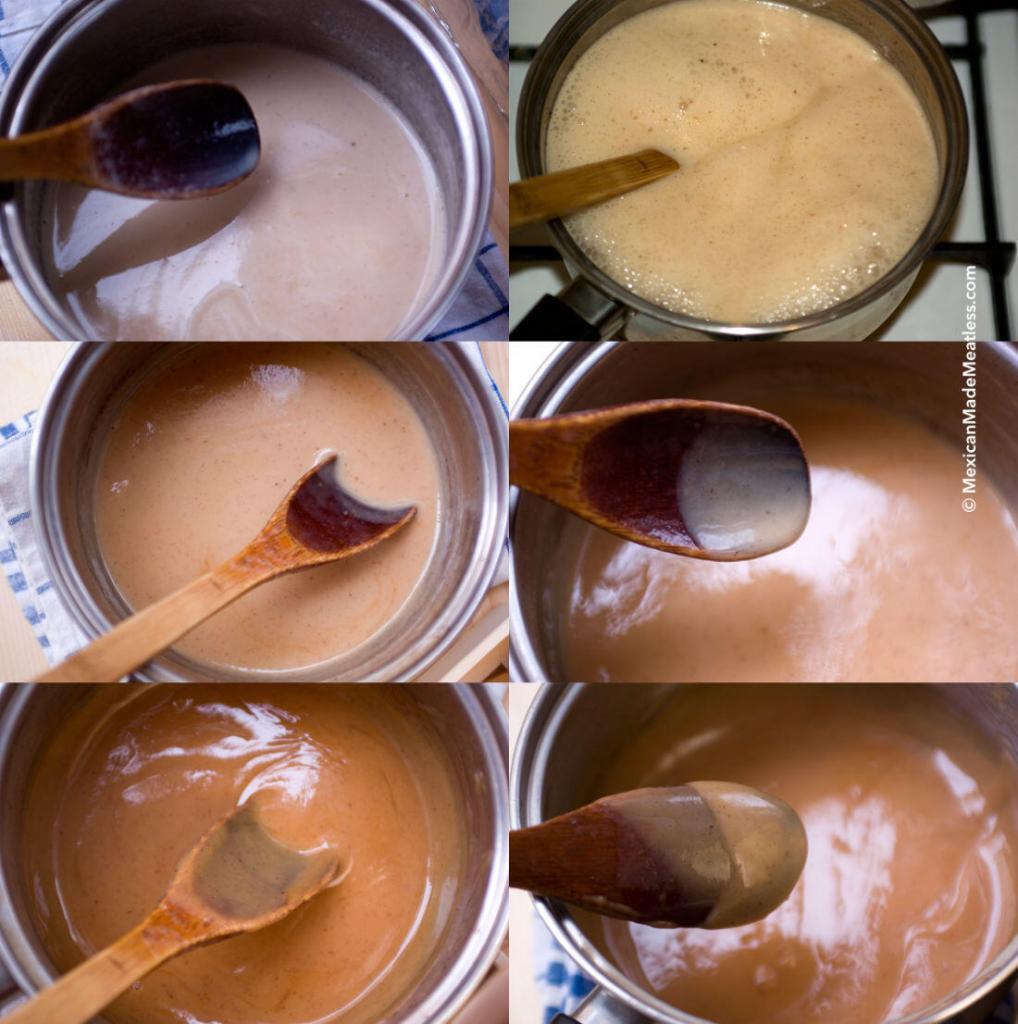
Cajeta Recipe
You’re going to love my easy cajeta recipe!
Below is my recipe for my small cajeta portion. But if you have a larger family you could try the larger version.
Either way, these are standard recipes that are used by many people.
Cajeta Recipe (Easy, Authentic & Delicious)
Video
Equipment
- 1 large heavy pot
- 1 wooden spoon
- 8 oz glass jar very clean
Ingredients
Ingredients
- 2 cups or 16 oz. or 500 ml goat milk*
- ⅓ cup or up to ½ cup white sugar
- ½ tsp. vanilla extract or ¼ tsp bourbon vanilla powder
- 1 whole cinnamon stick
- pinch of salt
- ¼ tsp. baking soda
- 2 tbsp whole fat cow milk
Equipment Needed
Instructions
INSTRUCTIONS
- Pour the goat milk, sugar, salt, vanilla, and cinnamon (if using) into a large heavy pot and bring to a light boil over medium heat. Stir to make sure all of the sugar has dissolved, remove from heat.
- In a separate bowl mix the cow milk and baking soda until the baking soda has dissolved. Remove pot from burner, pour baking soda mixture into the goat milk, stirring fast, be careful because the liquid will quickly froth and overflow. Stir until the bubbles have subsided then turn the heat to medium and bring the pot back to the heat.
- Continue to cook the goat milk mixture, stirring very frequently because the mixture may bubble and pour over the pot. After another 20-30 minutes the mixture should begin to a darken and start thickening into a thick sauce consistency. Continue simmering and stirring frequently until the mixture turns a dark caramel color and coats the wood spoon, this may take another 20-40 minutes depending on liquid left in the pot. The cajeta should the same consistency as maple syrup.
- Pour into a jar and allow to cool completely. Store in the refrigerator until ready to use. The cajeta will keep fresh in the refrigerator for a couple of weeks.
- The cajeta taste best if warmed up a little bit before using as desired.
Notes
Large Portion Ingredients: 2 quarts or 1.90-liter goat milk
2 cups white sugar
1 tbsp vanilla extract or ¾ tsp bourbon vanilla powder
one Mexican cinnamon stick (ceylon cinnamon)
pinch salt
1 tsp. baking soda
2 tbsp whole fat cow milk ***The process is the same whether making the small or large version. The only difference is that it may take a bit longer for the larger version. (P.S. I forgot to include the cinnamon stick in the ingredients photo. Oops!)
Nutrition
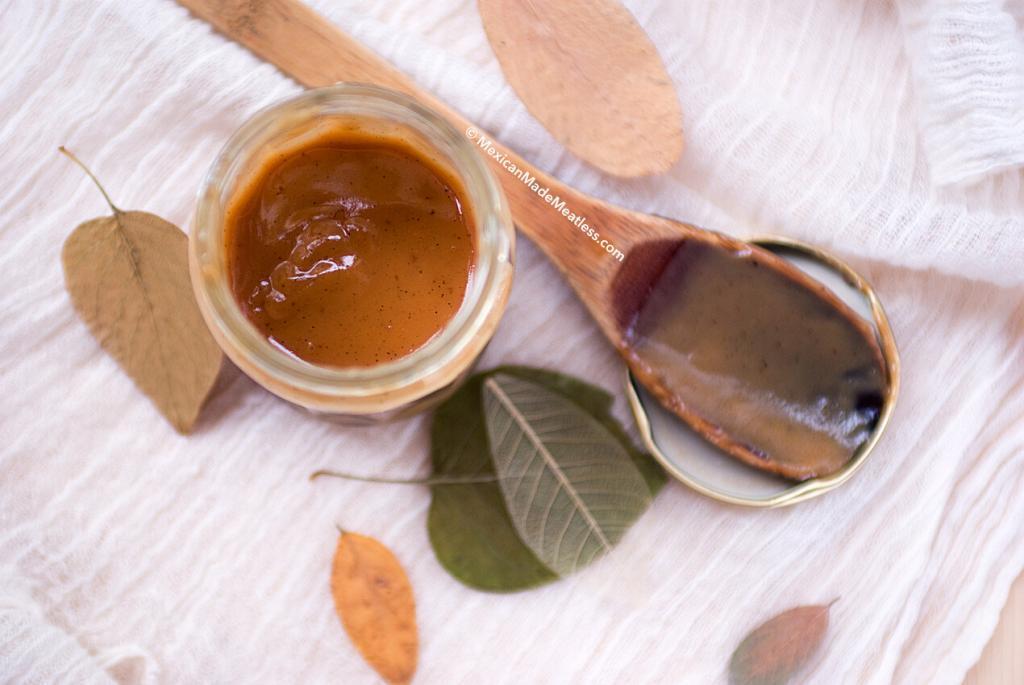
As you can see, though it will give your arms a workout and you must be patient, making cajeta at home really isn’t complicated at all.
It’s so worth the effort and way better than the stuff available at the grocery store.
Now if you live in a place where you can get it locally made, then maybe just make cajeta once so you say you’ve done it, then support the local artisans.
Nancy Lopez is a food blogger and author of the cookbook Mexican Tamales Made Meatless. Born in Mexico, raised in the US, and currently living in Southern Mexico, she has followed a meatless diet for almost 10 years. It is her passion and mission to share all she has learned about vegan Mexican cooking and vegetarian Mexican recipes. Mexican Made Meatless is a blog dedicated to preserving the authentic flavors of Mexican cuisine just without the meat. It’s a place to celebrate Mexican culture and all it’s delightfully delicious traditional foods. Read more…

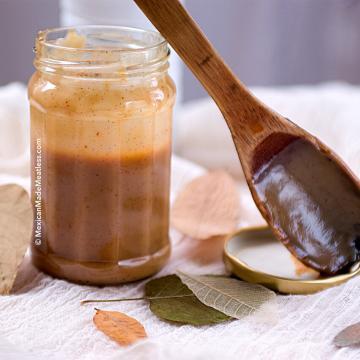
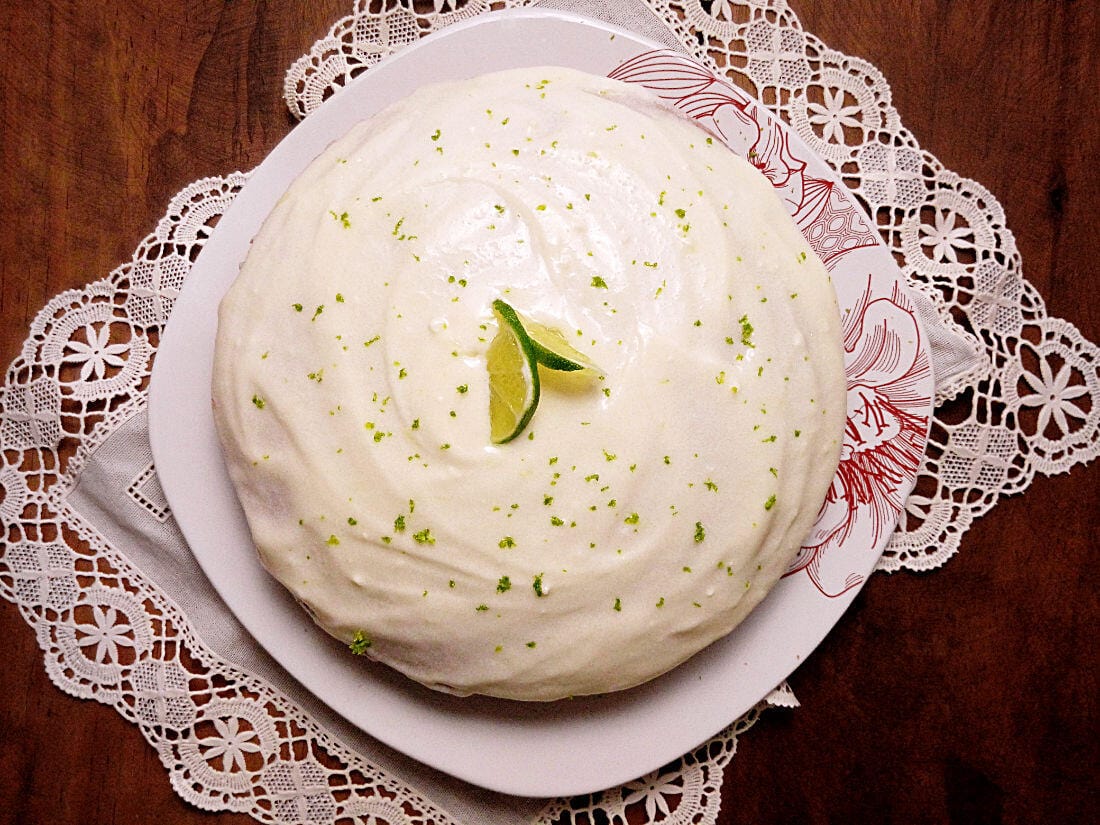
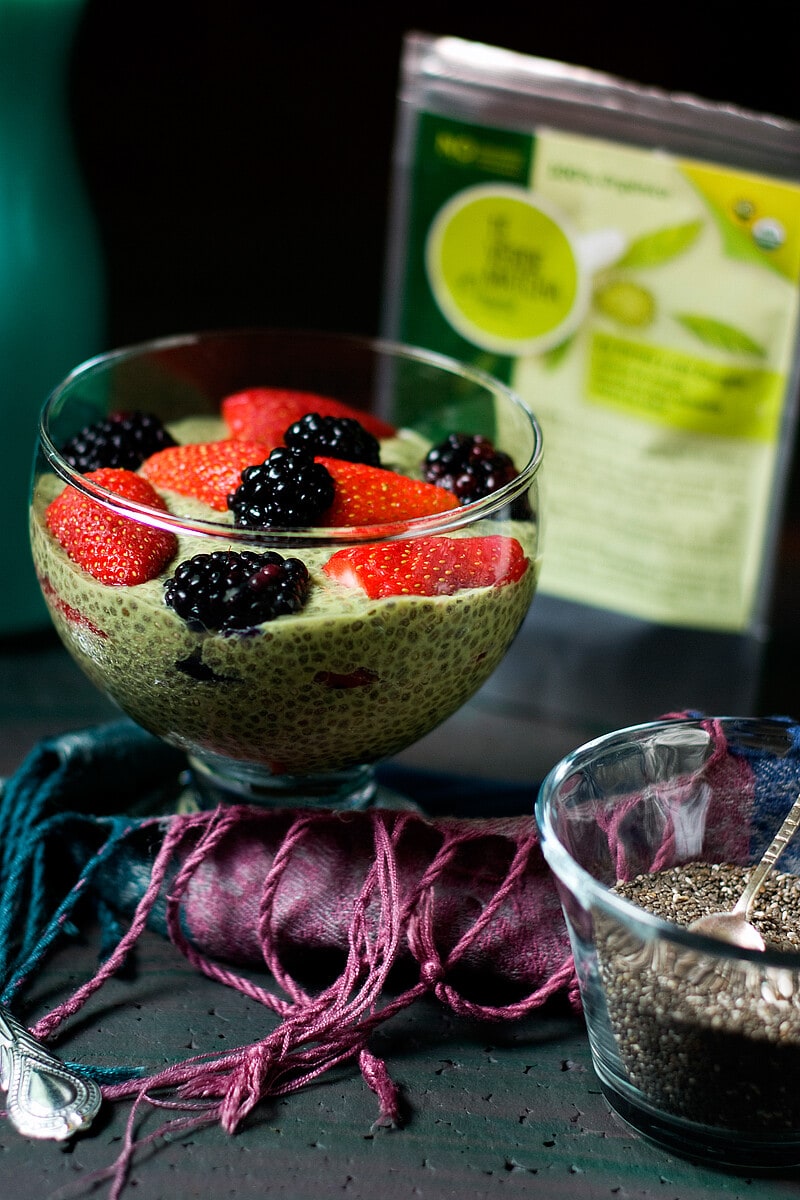
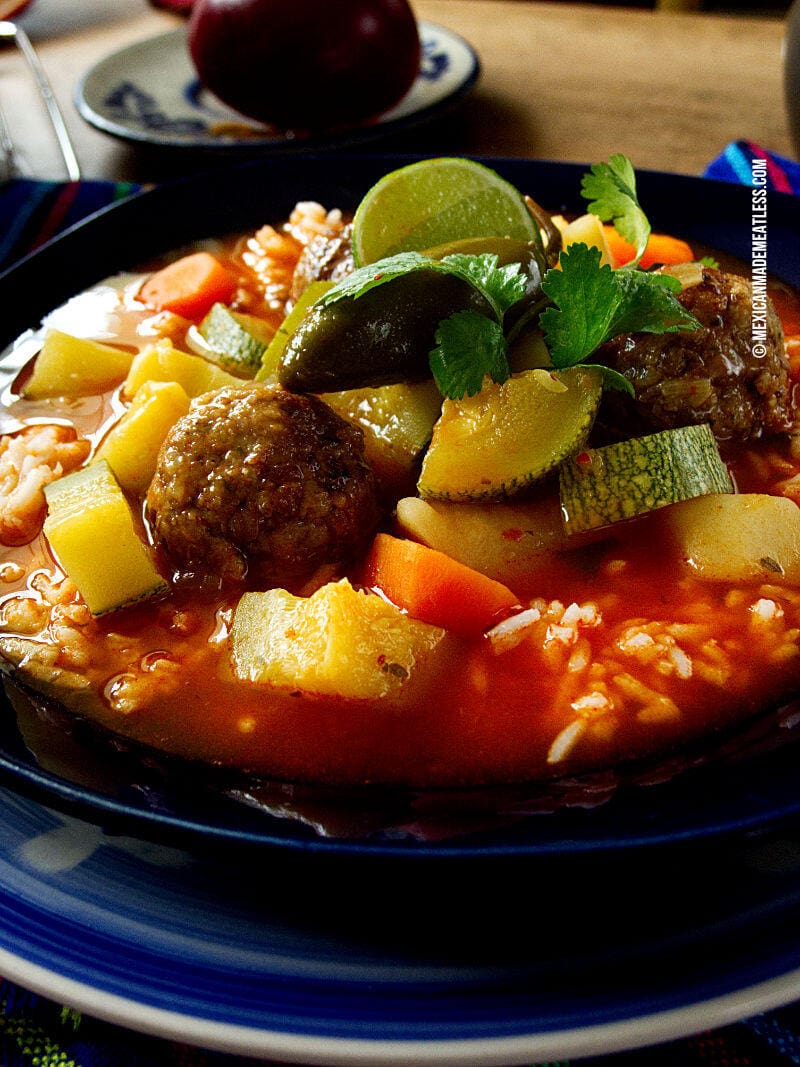
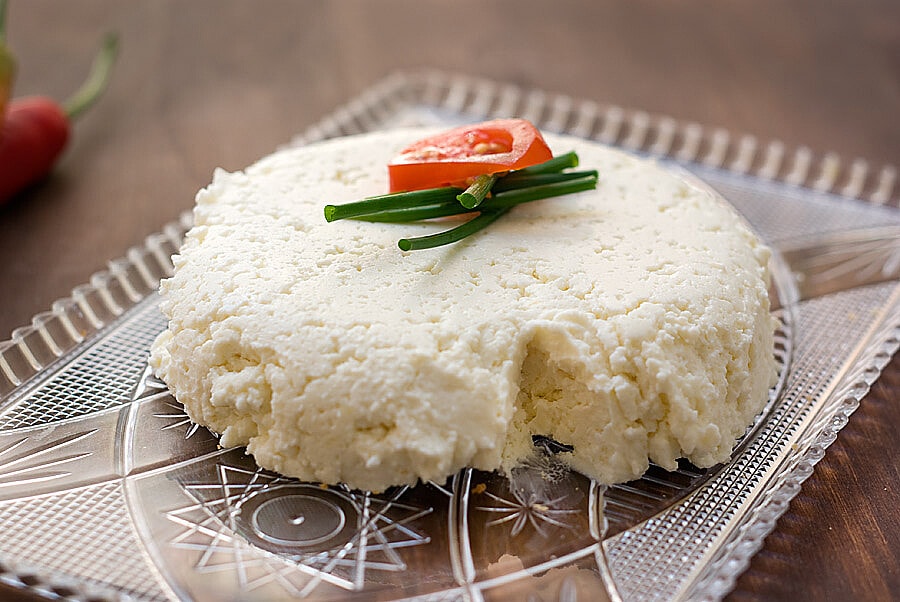
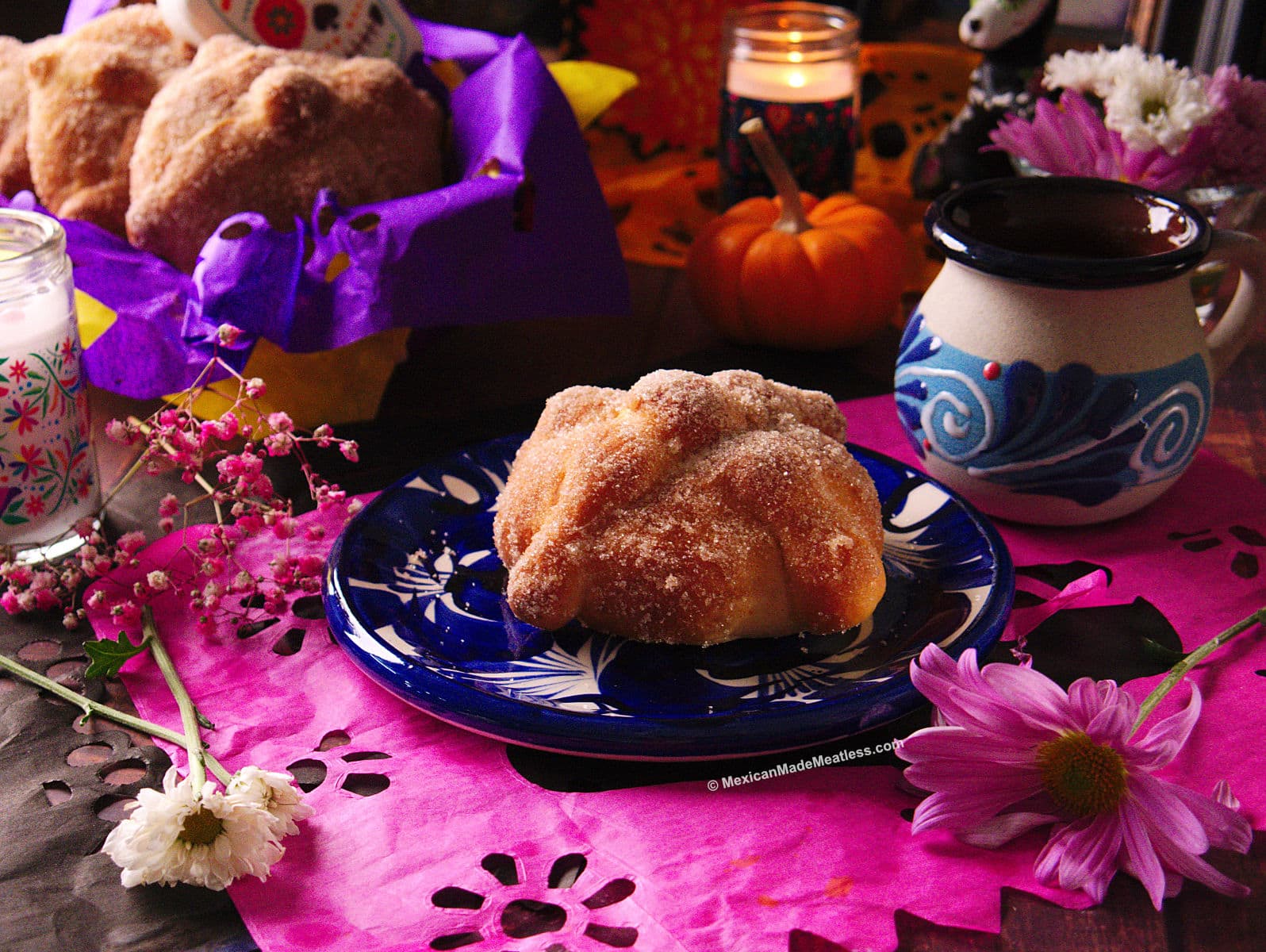
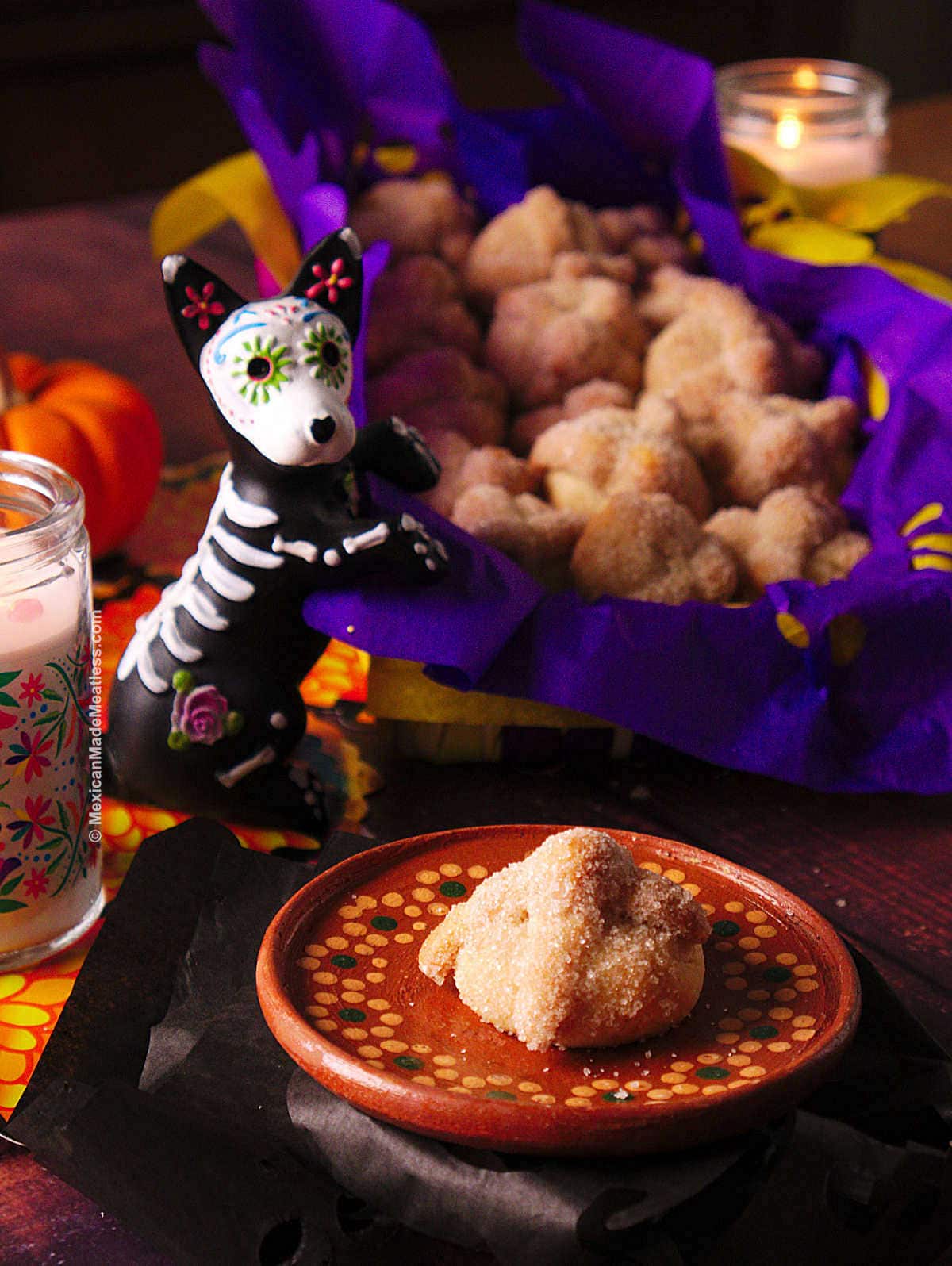
I was making a chocolate cake, rich with extra egg yolks, and I wanted to add a layer of flan. I also wanted to make a Mexican type caramel for the topping.
I read through many recipes, this is the one I decided to try.
No changes, I always give a recipe the opportunity to stand on its own. It did.
Wowsers, tastes great.
The richness of the cake was not hidden or muffled by the flan, (my own recipe), or this cajeta. I was a bit worried the cajeta would be too sweet, nope, a perfect accent that helped the dessert shine.
Hi Tony!
Wow your cakes sound spectacular! I wish I could have a taste. Thanks so much and glad to hear my cajeta recipe worked perfectly with your cake.
Hands down best recipe for cajeta
Thanks so much Gemma!
Finally a great recipe. gracias
Ah, thank you Mari!
Hi,
I am about to try this recipe. I appreciate that you provide the convenient option to simply click on a button to increase the recipe. However, the calculation is not consistent throughout. Ex. When I tried doubling the recipe, it changed to 4 cups milk but still said 16 oz. I thought you might want to know about and double check/correct any calculation errors.
Thank you!
Hi! Oh I’m sorry about that, it has something to do with the recipe plugin. I’ve just reported it to the creators. I hope you enjoyed your cajeta. 🙂